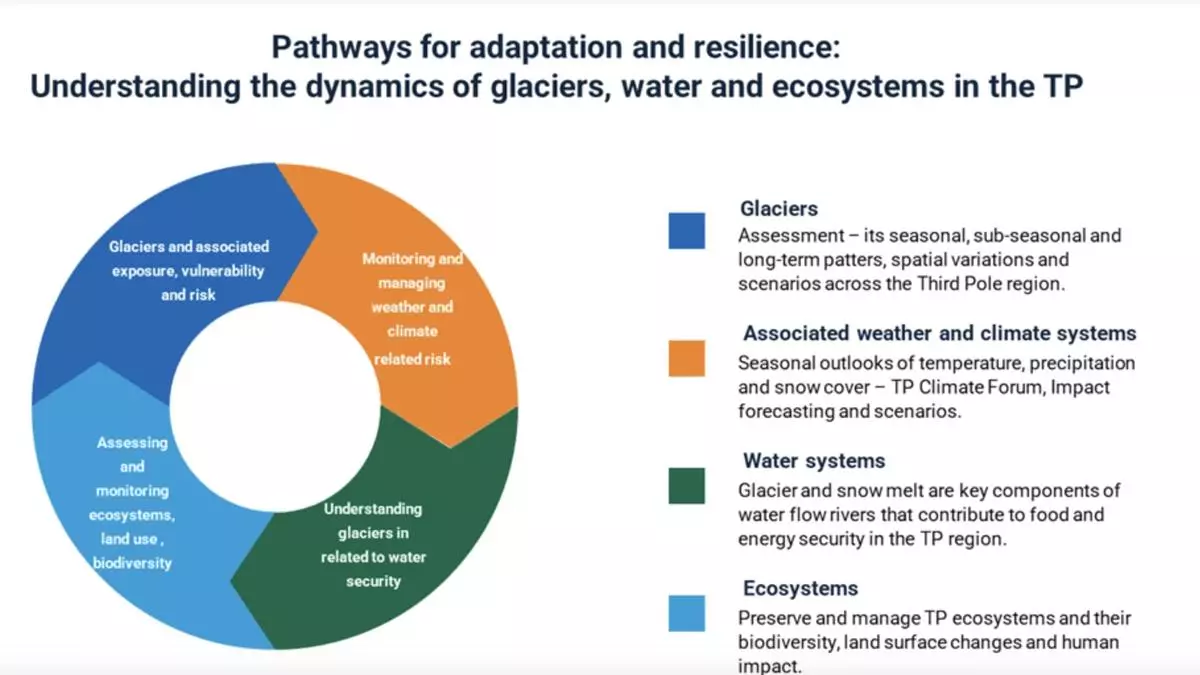Weather teleconnections in Asia’s glaciated ‘Third Pole’ call for close watch, says UN-ESCAP
Weather forecasting relies on the interconnectedness of atmospheric and ocean conditions across the globe, enabling predictions weeks to months in advance. These ‘teleconnections’ denote significant links between weather across distant locations, involving patterns spanning thousands of kilometres.
This is true also in the case of the Third Pole (TP), encompassing the vast glaciated mountain systems of Asia, characterised by hazards posed by glaciers with their potential exposure, vulnerability and impacts zones thousands of kilometres apart. The TP hosts the largest ice mass outside the polar region and spans the Tibetan plateau and adjoining Pamir-Hindu Kush, Hengduan, Tienshan, Qilian and Himalayas ranges.
Surpasses global average
The TP region is reportedly warming at an alarming rate of over 0.3 ºC per decade, surpassing the global average. Impact assessment here needs to be based on understanding the teleconnections of glaciers and their potential impact zones, says Sanjay Srivastava, Chief, Disaster Risk Reduction, at UN-ESCAP, Bangkok. ESCAP is making efforts to translate seasonal outlook in terms of impact scenarios highlighting potentially at-risk communities, sectors and systems of the TP region.
In early June, the TP Regional Climate Centre (TPRCC) Network issued its first ever seasonal outlook for the summer season June to September 2024 for the region. It said surface air temperatures are likely to be above normal over most parts of the TP, especially over the Karakoram. The southwestern and northwestern parts are likely to experience normal to above normal surface air temperatures. Precipitation is likely to be near or above the climatological normal over most parts of the region. However, it is likely to be below normal in the West and the South-East.
Rapid glacier melt
The TPRCC Network comprises three geographical nodes, with thematic responsibilities for mandatory functions for the entire region, Srivastava explained. While China leads the northern and eastern nodes, India and Pakistan lead the southern and western nodes. The Beijing Climate Centre provides overall coordination. ESCAP is one of the contributing partners of the network.
Rapid changes in the cryosphere and melting of glaciers significantly impact high-mountain ecosystems and downstream regions. As the water tower of Asia, the TP is vital for socio-economic stability through its freshwater resources, said Srivastava. Warming has caused considerable variations in lakes, inland water bodies and the runoff into the river basins. Additionally, glacial disasters such as ice collapse and glacial lake outburst floods (GLOFs) have become more frequent and dangerous in recent years.
Himalayan hotspots
Glacier melting has been intensifying, especially along the Himalayas creating multi-hazard risk hotspots, Srivastava pointed out. GLOFs pose a threat to mountainous communities across Bhutan, India, Nepal, and Pakistan. Future scenarios project the Hindu Kush Himalayan glaciers could lose up to 80 per cent of their current volume by the end of the century. This may drastically reduce freshwater supply to major Asian rivers including the Yangtze, Indus, Ganges, Amu Darya and Helmand. The decreasing extent of frozen ground (permafrost) will likely lead to more landslides.
